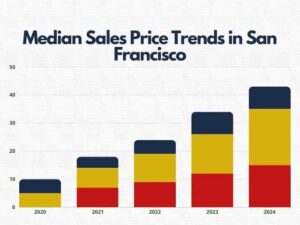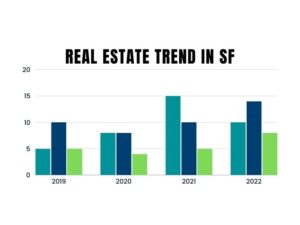Vallejo, CA, is a city located in the San Francisco Bay Area, with a population of about 122,000 people. It is known for its diverse culture, historic attractions, and proximity to Napa Valley and Sonoma County. Vallejo has a median home price of $510,000, which is lower than the national average of $585,000. However, Vallejo’s home appreciation rate is higher than the national average, at 14.5% compared to 10.8%. Vallejo’s housing market is also very competitive, with homes selling in an average of 11 days, and receiving multiple offers.
If you are interested in buying or selling real estate in Vallejo, CA, or if you want to learn more about the local housing market, you might be wondering what factors affect the valuation of properties in this city. In this blog post, we will discuss the main factors that influence the market value of real estate in Vallejo, and provide some tips on how to maximize your return on investment.
External Factors
External factors are the factors that are outside the control of the property owner, such as economic conditions, market trends, government policies, infrastructure, and natural disasters. These factors impact the supply and demand of real estate, and the price fluctuations in the market.
Some of the external factors that affect the valuation of real estate in Vallejo are:
- Economic conditions: The state of the economy, both locally and nationally, affects the income, employment, and purchasing power of potential buyers and sellers. For example, during the COVID-19 pandemic, many people lost their jobs or faced reduced income, which affected their ability to afford or maintain a home. On the other hand, the low interest rates and stimulus checks provided some relief and incentive for home buyers.
- Market trends: The trends and cycles of the real estate market affect the supply and demand of properties, and the level of competition and negotiation. For example, during the spring and summer seasons, there is usually more activity and demand in the market, which drives up the prices and lowers the inventory. On the other hand, during the fall and winter seasons, there is usually less activity and demand, which lowers the prices and increases the inventory. You can check this post for current market trends and prices in Vallejo.
- Government policies: The laws and regulations enacted by the government affect the taxes, fees, incentives, and restrictions for buying or selling a home. For example, the Proposition 19, which was passed in California in 2020, allows homeowners who are 55 or older, disabled, or victims of natural disasters to transfer their property tax base to a new home of equal or lesser value, within the same county or anywhere in the state, up to three times. This policy encourages older homeowners to sell their homes and buy new ones, which increases the supply and demand of real estate in the market.
- Infrastructure: The quality and availability of public services and facilities, such as transportation, education, health care, and recreation, affect the liveability and desirability of a neighborhood or city. For example, Vallejo has a ferry service that connects it to San Francisco, which makes it convenient for commuters and tourists. Vallejo also has several schools, colleges, hospitals, parks, and museums, which offer various opportunities and amenities for residents and visitors.
- Natural disasters: The occurrence and severity of natural disasters, such as earthquakes, wildfires, floods, and landslides, affect the safety and security of a property and its occupants. For example, Vallejo is located in a high-risk earthquake zone, which means that it is prone to strong and frequent seismic activity. Vallejo is also vulnerable to wildfires, which can cause damage and destruction to homes and landscapes. These natural disasters can lower the value and appeal of real estate in Vallejo, and increase the cost and difficulty of insurance and maintenance.
Internal Factors
Internal factors are the factors that are related to the property itself, such as size, condition, amenities, location, and financing terms. These factors influence the attractiveness and functionality of the property, and the buyer’s willingness to pay.
Some of the internal factors that affect the valuation of real estate in Vallejo are:
- Size: The size of a property, measured by its square footage, lot size, number of bedrooms and bathrooms, and garage space, affects its capacity and utility. Generally, the larger the property, the higher its value, as it can accommodate more people and activities. However, the size of a property should also be proportional to its location and neighborhood, as it can affect its compatibility and harmony with the surrounding environment.
- Condition: The condition of a property, determined by its age, quality, and maintenance, affects its appearance and performance. Generally, the newer and better maintained the property, the higher its value, as it can provide more comfort and convenience for the occupants. However, the condition of a property should also reflect its style and character, as it can affect its charm and uniqueness.
- Amenities: The amenities of a property, defined by its features and upgrades, affect its comfort and convenience. Generally, the more and better amenities the property has, the higher its value, as it can enhance the quality and enjoyment of living. Some of the amenities that are popular and valuable in Vallejo are: solar panels, energy-efficient appliances, smart home devices, hardwood floors, granite countertops, fireplaces, pools, decks, and landscaped yards.
- Location: The location of a property, influenced by its proximity and accessibility to various places and services, affects its desirability and convenience. Generally, the better the location of the property, the higher its value, as it can offer more benefits and opportunities for the occupants. Some of the factors that determine the location of a property are: neighborhood, school district, crime rate, noise level, view, orientation, and walkability.
- Financing terms: The financing terms of a property, governed by the interest rate, down payment, loan type, and closing costs, affect its affordability and availability. Generally, the more favourable the financing terms of the property, the higher its value, as it can make it easier and cheaper for the buyer to purchase and own. However, the financing terms of a property should also match the buyer’s financial situation and goals, as it can affect their long-term satisfaction and security.
Conclusion
The valuation of real estate in Vallejo, CA, is affected by various factors, both external and internal, that influence the supply and demand of properties, and the price fluctuations in the market. As a potential buyer or seller, you should be aware of these factors, and how they impact the value and attractiveness of your property. To improve the value of your real estate in Vallejo, you should consider the following tips:
- Upgrade your home features, such as adding solar panels, energy-efficient appliances, smart home devices, hardwood floors, granite countertops, fireplaces, pools, decks, and landscaped yards, to increase its comfort and convenience.
- Choose the right time to buy or sell, such as during the spring and summer seasons, when there is more activity and demand in the market, and the prices are higher.
- Hire a professional appraiser or agent, who can provide you with an accurate and objective valuation of your property, based on the current market conditions and comparable properties.
If you need more help or information on buying or selling real estate in Vallejo, CA, please contact us at BCRE. We are a team of experts and enthusiasts who can assist you with your real estate needs and goals. We look forward to hearing from you soon!












